When you think of Miami Beach, what comes to mind? Crockett and Tubbs from Miami Vice? College kids on Spring Break? Or Robin Williams and Nathan Lane in The Bird Cage?
Geography
Just to be clear, Miami Beach and Miami are not the same. The barrier island of Miami Beach was incorporated as a city in 1915 and lies about three miles east of Miami across from Biscayne Bay.
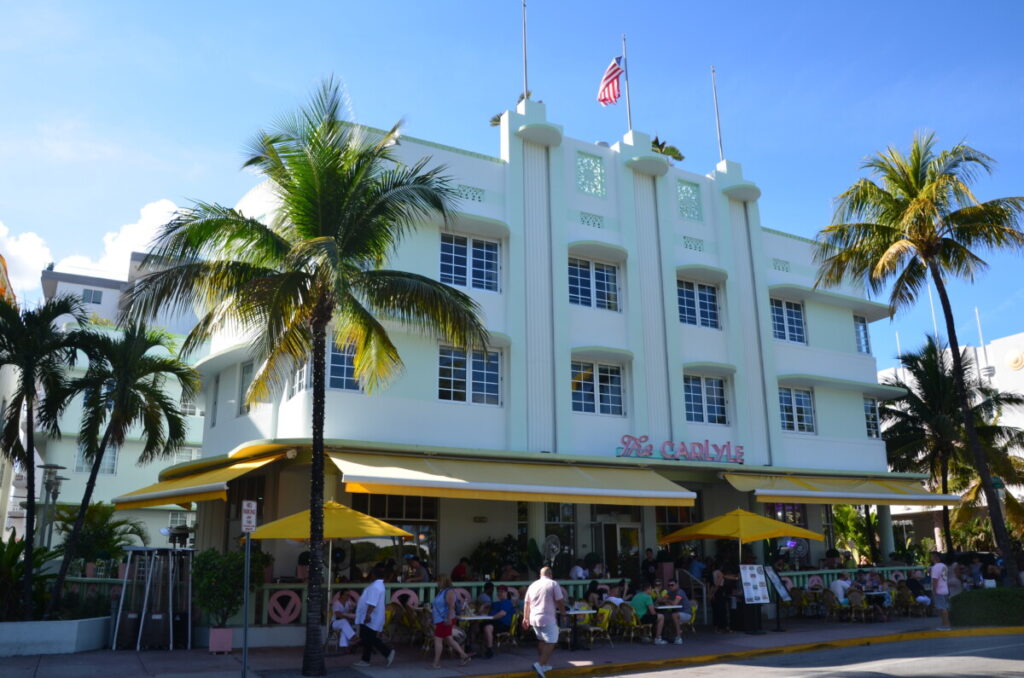
Miami Beach can be divided into three primary areas: South Beach, Mid Beach, and North Beach. South Beach, a 1.7 square mile area, contains the highest concentration of Art Deco buildings, not only in the country but in the world. Known today as one of the hippest, trendiest, and most sought-after neighborhoods, South Beach (SoBe), with its classic Art Deco buildings, faced demolition in the 1970s.
While you can get the feel of the Art Deco architecture just by driving through SoBe, you really need to get out and walk around. Several companies offer architecture tours of the district and a welcome center sits on Ocean Drive.
Art Deco Museum – South Beach
Inside the Welcome Center, we visited the Art Deco Museum operated by the Miami Design Preservation League (MDPL). It is well worth a visit if time allows. Most of everything I learned about the Art Deco buildings in SoBe came from this museum. However, I’ll intersperse the information with pictures of actual sites we saw while walking around.
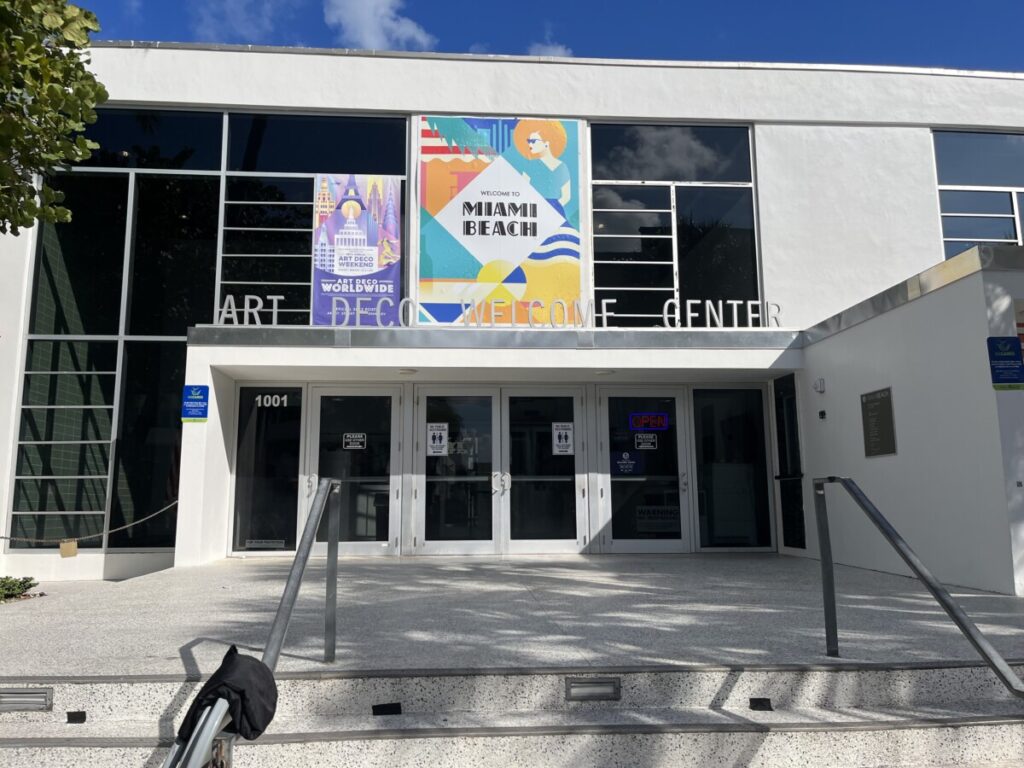
Architectural Styles
The museum highlights three styles found on Miami Beach: Mediterranean Revival, Art Deco, and Miami Modern. Popular during Florida’s land boom in the 1920s, the Mediterranean Revival style resembles Italian villas with red-tile roofs and stucco walls, often evoking an Old World feel.
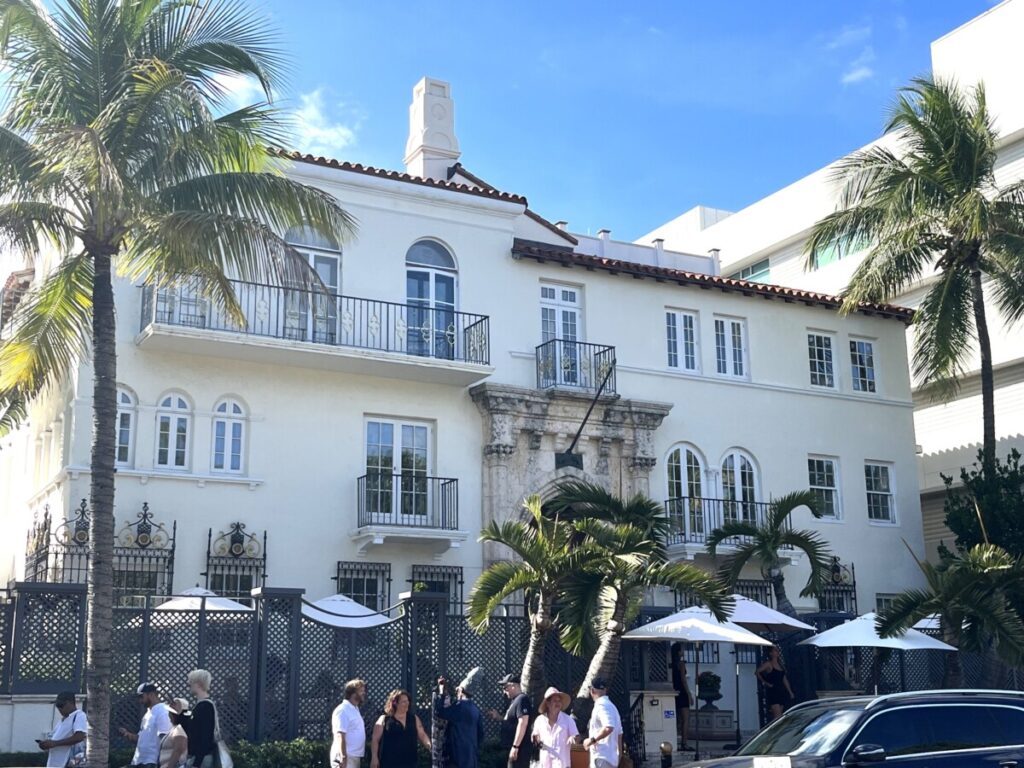
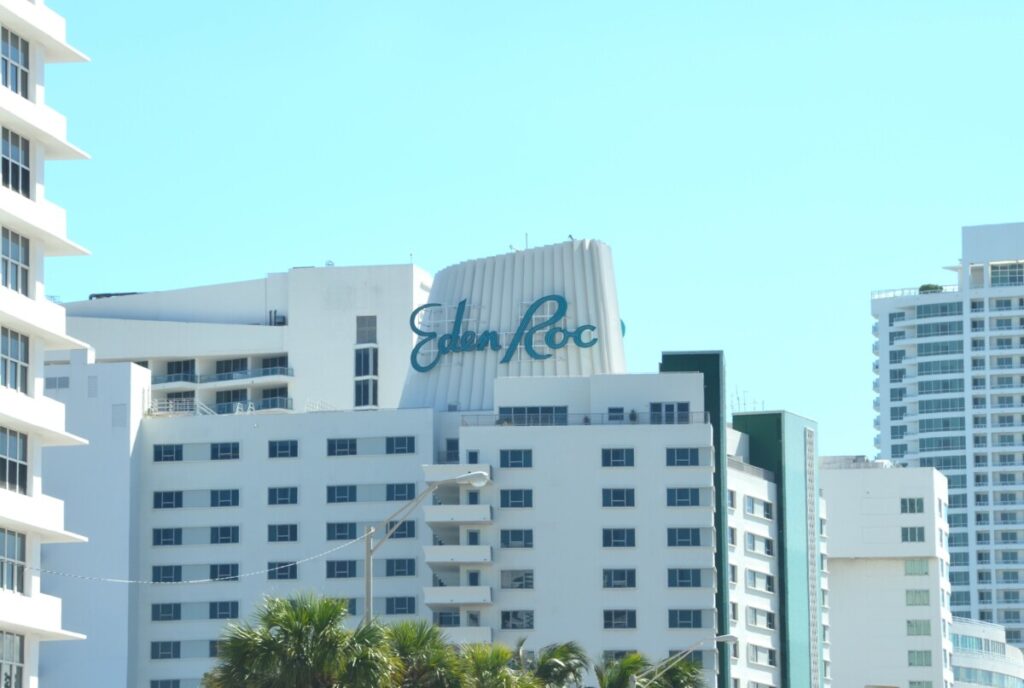
I’ll get to Art Deco shortly. However, at the other end of the spectrum, Miami Modern (MiMo) gained popularity after WWII. Considered fun and futuristic, the style features steel pipe columns, ironwork, and masonry window frames. Examples include many hotels built by Morris Lapidus, including the Eden Roc (1956) and Fountainbleau (1956) found in Mid Beach.
Art Deco refers to the streamlined style of the late 1920s -1940s. Hallmarks of this style include symmetrical buildings, bas-relief panels, eyebrow window frames, shiny metals, and geometric patterns. Popular examples in the country include the Empire State Building and Chrysler Building in NYC.
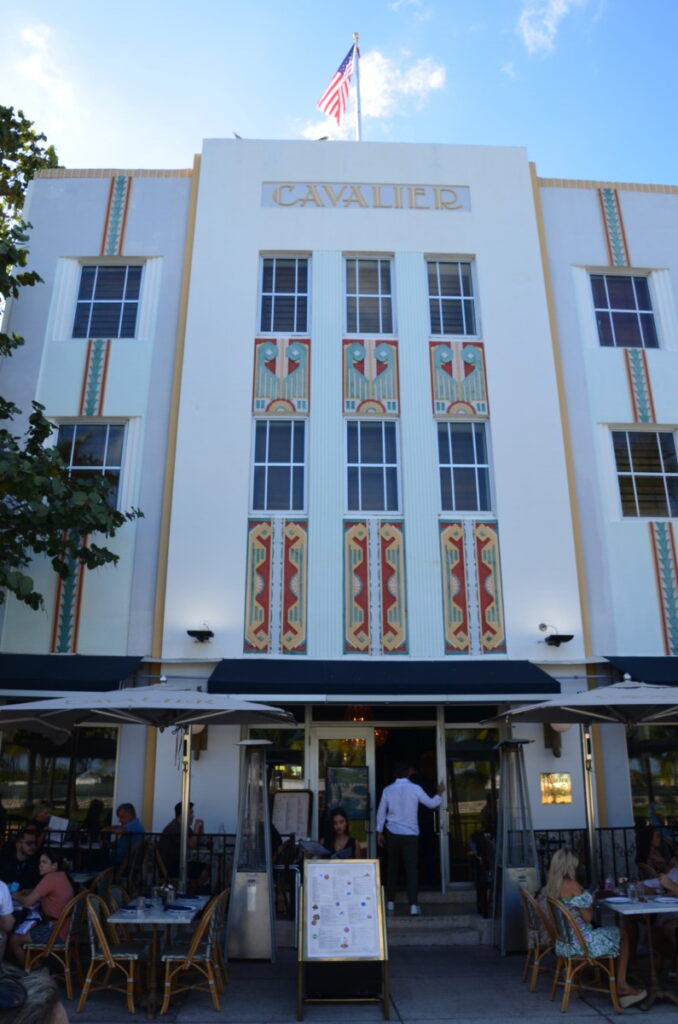
Early History
Although Charles Lum and his father bought most of SoBe’s land for 25 cents an acre in the 1870s for a coconut farm, it wasn’t until John Collins and Carl Fischer completed a 2.5-mile wooden bridge in 1913 that tourists started visiting. Soon hotels such as the Flamingo and restaurants such as Joe’s Crab Shack sprung up. Millionaires JC Penney, Harvey Firestone, and others came down and built mansions along Collins Avenue.
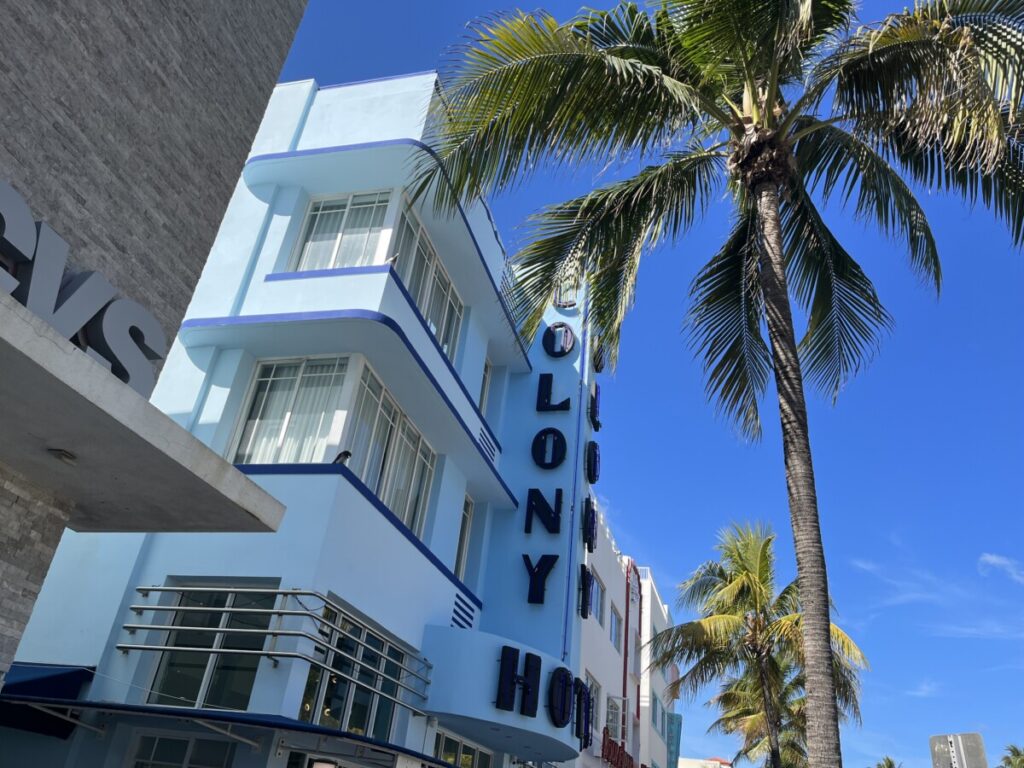
South Beach soon became “America’s Playground” with golf courses and casinos to keep the wealthy entertained. The shopping area along Lincoln Road was nicknamed “The Fifth Avenue of the South.” Despite the 1926 hurricane and the Depression, the population doubled to 13,000 between 1930 and 1935.
Art Deco Architecture
During the 1930s, New York architects Henry Hohouser and L. Murray Dixon, among others, brought Art Deco-style architecture to Miami Beach. Originating in Europe, Art Deco (short for Art Decoratifs) made its debut in 1925 at the International Exhibition of Modern Decorative and Industrial Arts in Paris. Hohouser built the Colony Hotel, one of the first hotels in this style along Ocean Drive. In total, Hohouser designed and created over 300 Art-Deco buildings in Miami, including the Cardoza Hotel, The Edison, and Essex House.
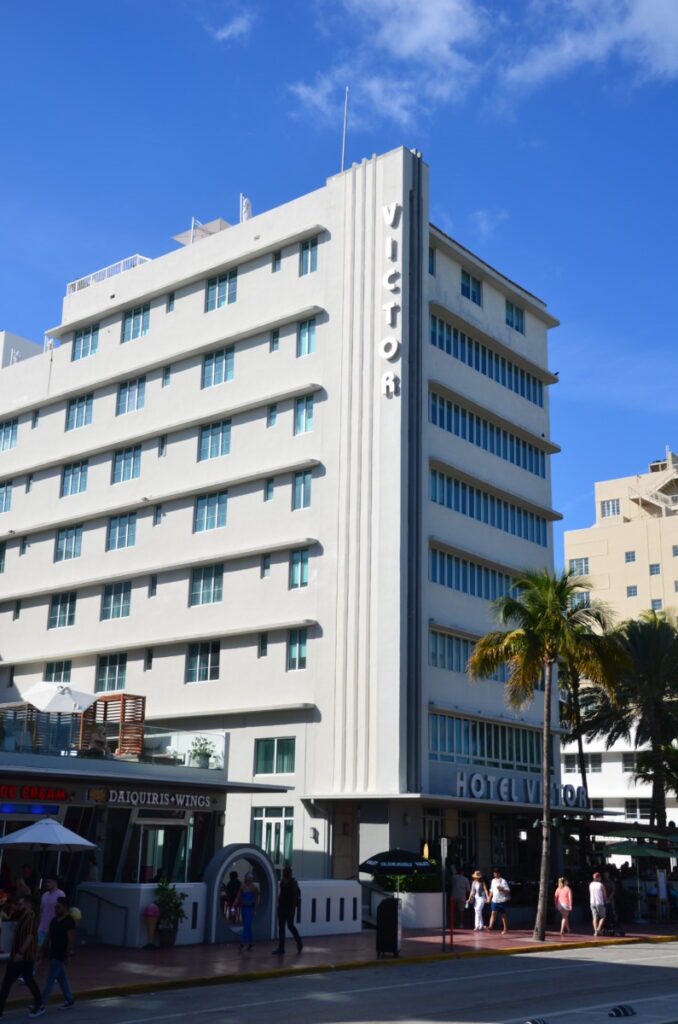
Dixon moved to the area from New York in the late 1920s. He built the Art Deco residence, Temple House, in 1933. Later the house served as the Joseph-Jacob congregation. He is credited with over 40 hotels and interiors in SoBe including Hotel Victor, The Tides Hotel, and The Kent. Despite protests from citizens and the MDPL, Dixon’s iconic hotel, The Senator, was torn down in 1988. Public outcry led to renewed interest in preservation efforts.
Later Years
WWII brought a halt to tourism. However, with a warm climate, flat landscape, and tons of hotel accommodations, SoBe served as an Army Air Corps training camp from 1942-1945. You can view pictures during this time from Life Magazine here. Unfortunately, after the war, people’s tastes changed and tourists gravitated to the new MiMo hotels in Mid Beach. SoBe’s heydey was over.
SoBe in the 1970s and 1980s
Had it not been for the efforts of the MDPL, South Beach would look vastly different. By the 1970s, SoBe no longer attracted young people. In response, most hotels converted to retirement homes for the aging population of retirees on fixed incomes.
The South Beach Redevelopment Committee proposed the “South Shore” plan to tear down all the buildings to build new hotels, restaurants, a boat marina, and a sports complex among man-made canals to create seven islands. To help the plan along, the city issued a moratorium on new or existing structures in SoBe beginning in 1973. Politicians hoped that decaying buildings would reduce property values so South Shore could buy up properties cheaply. However, the ambitious South Shore plan with its hefty price tag caused years of legal wrangling.
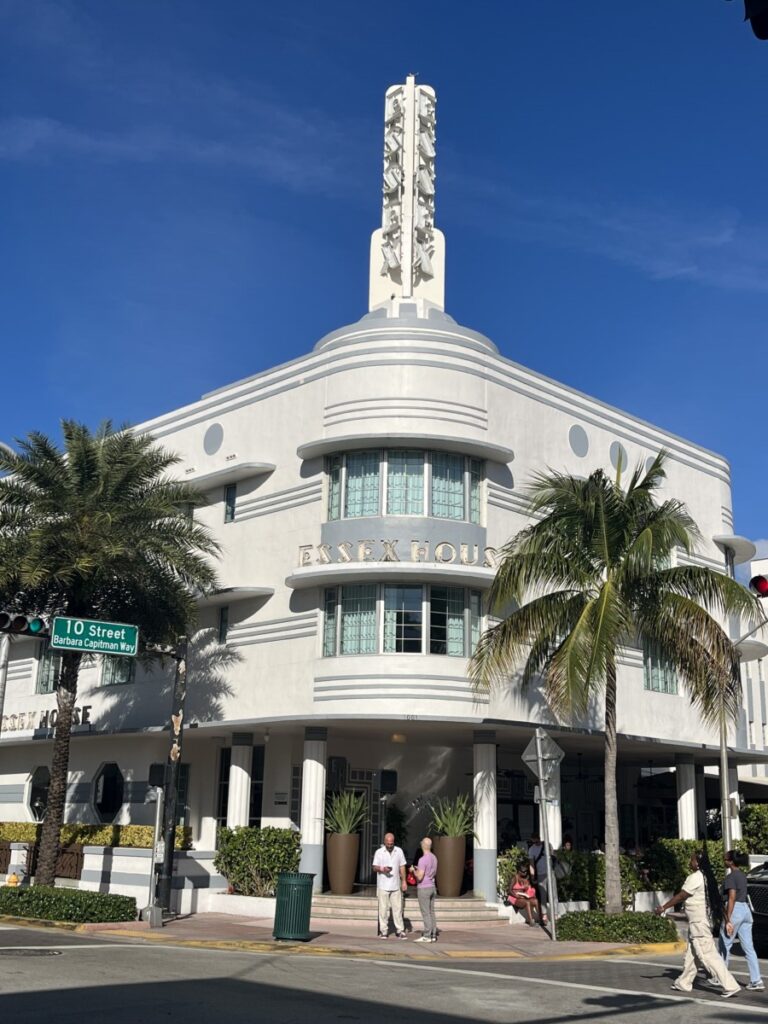
During the nine years of debate, many Art Deco buildings fell into disrepair. The city closed down the parks and stopped planting flowers since everything was to be redeveloped. Unfortunately, crime increased, as well as the number of immigrants, especially after the Mariel boatlifts. One statistic revealed that 70% of SoBe’s population earned less than $10,000 per year.
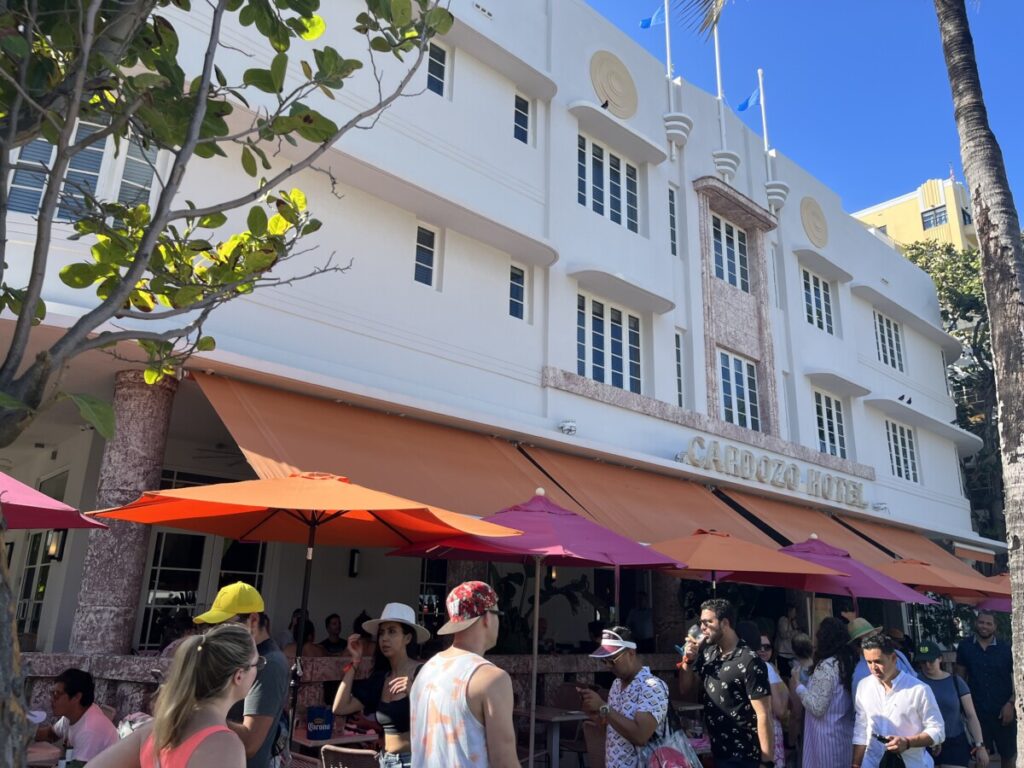
A Chicago and New York transplant, Barbara Baer Capitman fought hard to preserve the area. She and several other citizens formed the MDPL in 1976. The turning point came when Sobe was placed on the National Register for Historic Places. In 1982, the South Shore plan died for good and the city lifted the moratorium. Further changes to zoning laws in 1984 allowed the properties along Ocean Drive to add restaurants and bars.
Creation of the Miami Design Preservation League (MDPL)
The advent of the Annual Art Deco weekend, a well-publicized visit by Andy Warhol in 1980, the opening of restaurants such as News Cafe in the Tony Hotel, renovations to the Art Deco hotels, and a popular TV show called Miami Vice, helped the historic section attract younger people and bring tourism back to the area.
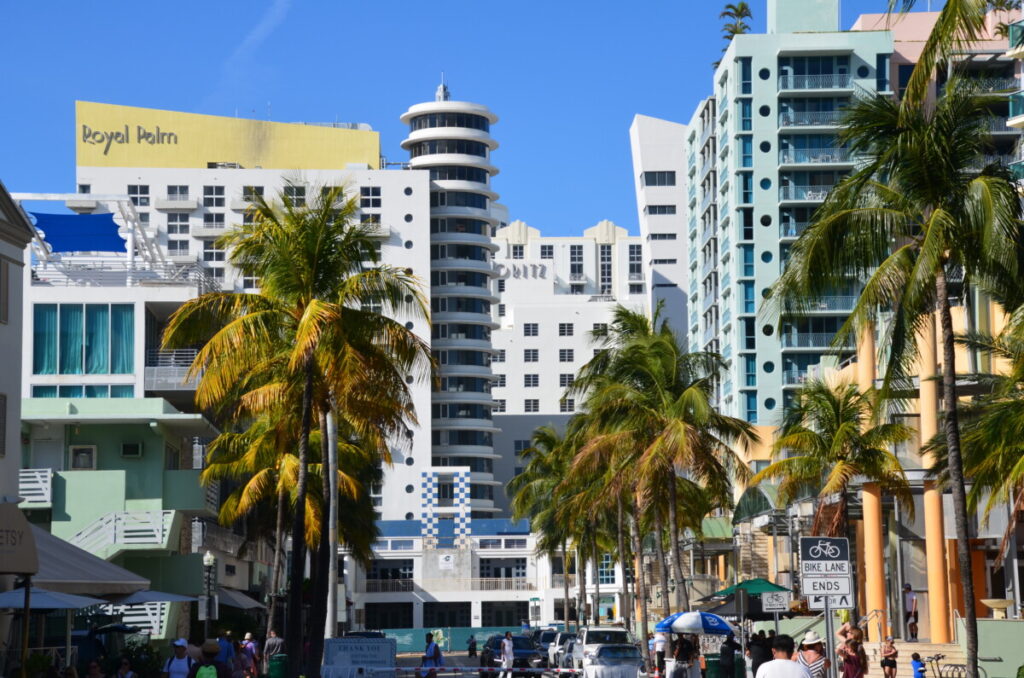
In Conclusion
You can read a very informative collection of articles about SoBe’s decline from Miami Herald here. For more information about the museum, Barbara Capitman, and continuing preservation projects, visit the Art Deco Museum’s website here.
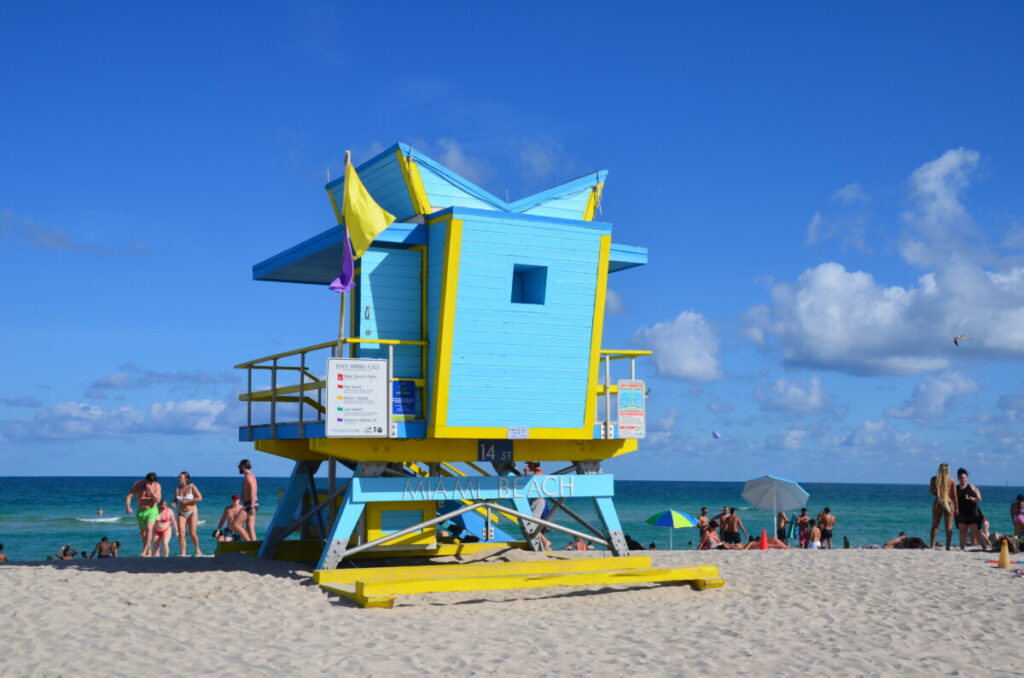
And with all this talk about the Art Deco structures, don’t miss the wonderful beach area!
